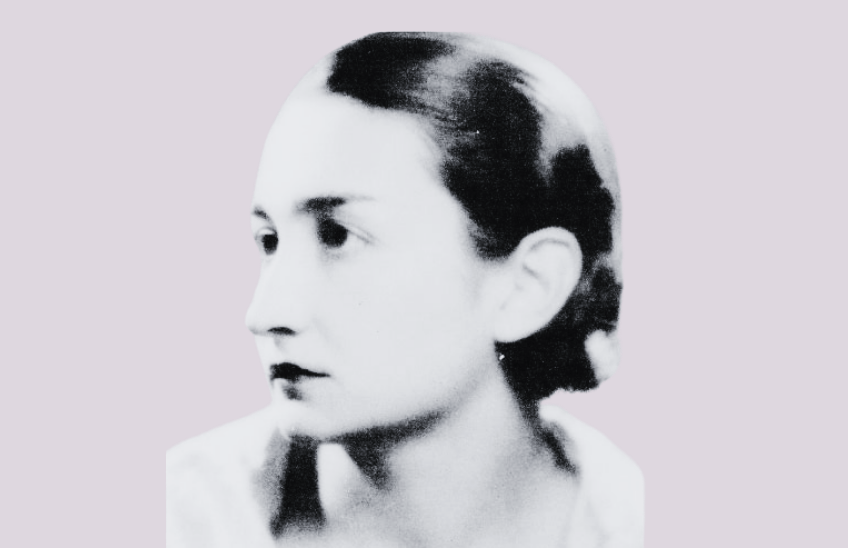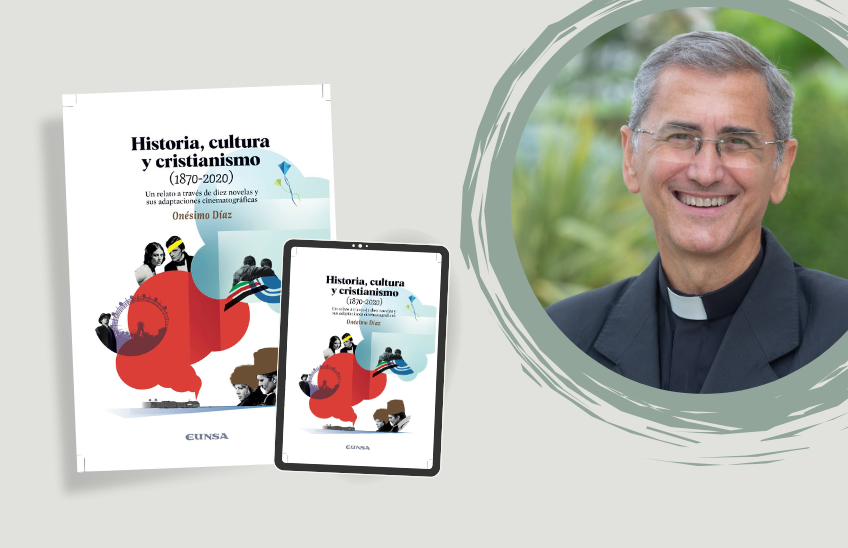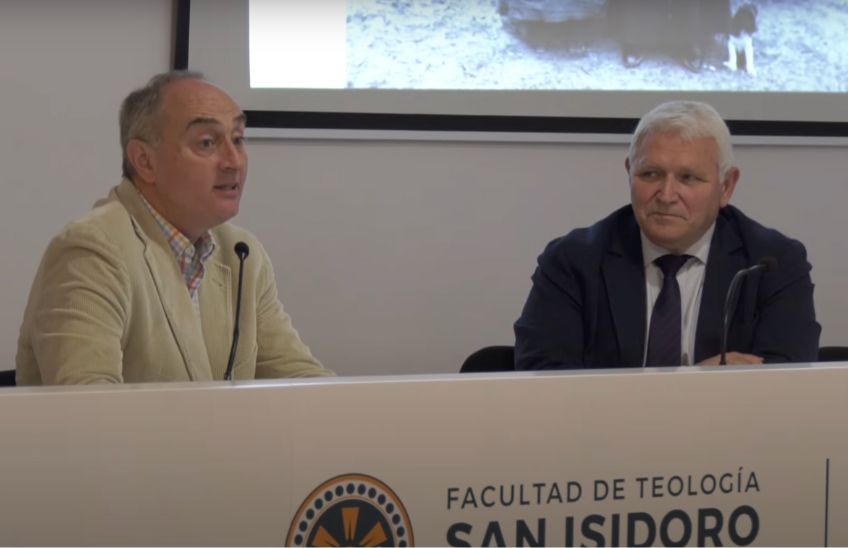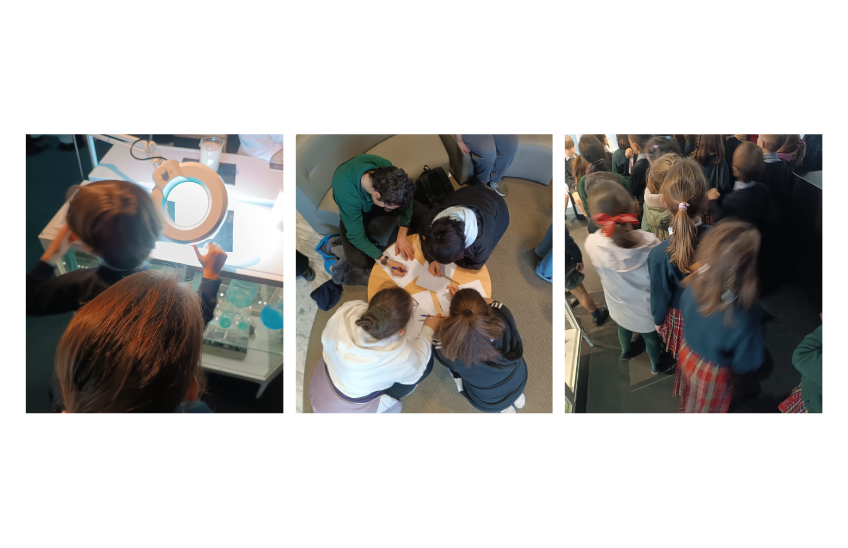A life between poetry, the avant-garde and the search for truth
A member of the Generation of '27, Ernestina de Champourcin was a poet committed to literary renewal and the thinking of her time. In this interview, Mª Dolores Esteban brings us closer to her figure, exploring her intellectual trajectory, her exile and the spiritual dimension that marked her life and work.

10 | 02 | 2025
Ernestina de Champourcin was one of the most singular voices of 20th century Spanish poetry. Raised in an aristocratic environment, she found in literature and the avant-garde a way to explore new ideas and, with them, a commitment to the social and cultural transformation of her time. Her evolution, from her early years until her exile, was marked by a constant search.
The book Ernestina de Champourcin: una intelectual de vanguardia, published by EUNSA and written by historian Mª Dolores Esteban, deals with this fascinating trajectory. The author examines Champourcin's formative period, from 1905 to 1940, exploring her family environment, her adherence to republican thought and her active role in the redefinition of the role of women in the 1920s and 1930s. The book also sample how her exile and her approach to God marked a turning point in her life and in her poetic work. For Champourcin, poetry was a vocation and God became her breath, inspiration and source her freedom. As a result of this return to Christ and her friendship with Guadalupe Ortiz de Landázuri, Ernestina asked for admission to the Work.
M. Dolores Esteban, with a degree in Art History and a PhD in Arts and Humanities, has focused her research on the intellectual women of the 1920s, with special emphasis on the figure of Champourcin. She is currently a professor at the Universidad Villanueva de Madrid.
In this interview, conducted by the Centro de programs of study Josemaría Escrivá, we talk with Dolores Esteban about the life and work of Ernestina de Champourcin, her avant-garde spirit, her commitment to poetry and freedom of expression, as well as her staff and spiritual evolution.
How did Ernestina de Champourcin discover her vocation for poetry? What elements or experiences do you think were decisive in this creative awakening?
Ernestina is a fascinating character, a courageous woman who, in the early 20th century, knew what she wanted and fought for it. Many women of her time may have had aspirations, but they were often subject to certain social conventions. In contrast, she not only had clarity about her path, but was also able to overcome any obstacle to achieve it.
As for his poetic vocation, it is difficult to pinpoint an exact moment, but I believe that his family environment was a core topic. He grew up in an aristocratic and refined aesthetic, with a strong French influence. At home French was spoken, the classics were read in several languages and contact with personalities of the cultural world was encouraged. This environment, together with an extraordinary sensitivity, provided him with an essential substratum to develop his creativity.
She discovered her vocation in reading and in conversations with her parents. From an early age, she felt an innate need to write and share her poems with her friends. It is curious that those early childhood verses are not preserved, but undoubtedly, from a very early age, reading and writing were a fundamental part of her life.
In your book you mention Ernestina de Champourcin's love for the avant-garde and her commitment to freedom of expression. How were these two influences reflected in her poetry and in her life?
As for his poetry, I would not dare to make a deep analysis, since my field is history and not literature. For that, I would recommend specialists such as Rosa Fernández Urtasun. However, Arturo del Villar, his literary executor, affirmed that his poetry is lived, that it is part of his life. So talking about his staff trajectory can give us clues about how these two aspects are reflected in his verses.
One of the most significant features of her commitment to freedom of expression was her independence from publishers. For example, when they proposed her to direct a women's section in which she described the role of women, she refused. However, when she was asked to write about contemporary poetry, she did not hesitate to highlight female authors such as Concha Méndez or Carmen Conde, at a time when it was more usual to focus on male writers. That decision, which may seem subtle, was actually an avant-garde gesture and a way of giving visibility to other women, something that many of her contemporaries did not do.
Her transgressive spirit, her love for the avant-garde, was also reflected in her staff life. For example, when she wanted to go to college, her family imposed on her the condition of attend accompanied by a chaperone, which she refused. For her, accepting such tutelage was inconceivable. She was also one of the few women who dared to participate in literary gatherings dominated by men, something uncommon in her time.
I believe that Ernestina not only defended freedom of expression in her work, but that she lived it consistently in every decision of her life.
The Lyceum Club Femenino was a very important space for the intellectuals of the time. What did this place mean to Ernestina de Champourcin and how did it influence her professional development ?
For Ernestina, the Lyceum was fundamental. Interestingly, in her personal writings she referred to herself as a founder, although she did not actually have permission at home to participate in its creation. Nevertheless, her association with the club was intense and significant.
There she found support from other women who, like her, shared a great passion for literature. From the beginning, she wanted to be actively involved and held several positions: administrative assistant of the literature section, of the Hispanic-American section and also in the social area . But, above all, she showed great interest in promoting reading among women. She used to say to María Luz Morales: "Women, read poetry", reflecting her conviction that reading should go beyond the tasks traditionally assigned to women.
The Lyceum provided her with a network of support, the possibility of making other writers visible and connecting them with publishers. However, it was also a space of misunderstandings. Her avant-garde spirit was not always understood by some of her colleagues, which generated frustrations and suffering. Although she never put it in writing, she expressed in her family the pain of feeling misunderstood. She even faced a vote of censorship, something difficult to assimilate for someone with such a strong defense of freedom of expression.
Despite these difficult times, his time at the Lyceum had more lights than shadows. An example of this is the tribute he received in June 1936, shortly before the Spanish Civil War. Thirty personalities from the literary world attended the event, which shows the recognition he already had at that time. María de Maeztu, in her speech, described her as an avant-garde, groundbreaking woman and a model for other women, something that undoubtedly defines her bequest.
When explaining key moments in her life, you state that her friendships and readings inclined her towards revolution. How was this rebelliousness channeled into her artistic expression and staff?
It is important to specify that the word revolution does not refer to armed struggle, since Ernestina was a pacifist, but to a revolution understood as the refusal to submit, to follow the imposed path without questioning it.
As for her friendships, a core topic figure was Huberto Pérez de la Osa, her first love and a poet from an aristocratic family. That relationship made her see that it was possible to be different within a conservative environment, but that to do so she had to fight. Also fundamental was her friendship with Juan Ramón Jiménez, whose conversations and teachings marked her deeply. He encouraged her to read, to reflect and, above all, to choose her own path, even if it meant moving away from that of her family. Ernestina even said that she lived in exile in her own home, because she felt that she was very different from her family.
In the literary field, she was also influenced by Spanish-American poets, such as Alfonsina Storni, as well as the works of Salinas, Lorca or Alberti, figures with republican ideals. All this led her to identify with the Popular Front and to adopt a republicanism that was more ideological than political. It was not so much an active militancy, but an adherence to ideas that promoted Education, women's access to culture and the fight against illiteracy.
More than a revolutionary in the strict sense, Ernestina was a woman with a strong artistic rebelliousness and staff. She faced difficulties with the publishing houses with which she published and did not hesitate to defend her poetic voice. At the staff level, she had the courage to follow her own path, even if she was not always understood. Her determination and autonomy are, perhaps, the most significant traits of her character.
Throughout her life, Ernestina de Champourcin showed a deep social sensitivity. What social causes did she defend? How did this sensitivity manifest itself in her work?
Undoubtedly, Ernestina had a great social sensitivity and she turned it to various causes. One of her main concerns was childhood, especially child illiteracy. Her commitment in this area was very concrete: while other people in her environment went to balls at the Ritz, she preferred to go to poor neighborhoods in Madrid to tell stories and teach reading. According to Arturo del Villar, one of the greatest connoisseurs of her life, her social involvement was always discreet, far from the charitable circles of high society where funds were raised and visibility was sought.
Another topic that deeply concerned him was abortion, which he opposed not so much from a moral perspective, but because he saw it as a reflection of a sick society that attacks the most defenseless. He wrote a poem about cowardice that reflects very well this sensitivity and his way of approaching this issue.
During the Civil War, her social commitment became even more evident. Despite not being a physically strong woman, she worked as a volunteer nurse, choosing the night shift, which was the hardest. She never sought recognition for it, she does not appear on official lists nor did she receive tributes, but her work was intense and silent. In addition, during those nights in the hospital she wrote a book, reflecting in her literary work the experience and the impact that that stage had on her.
During her exile in Mexico, the poet says that she experienced a "religious crisis". What did this crisis mean in her life and how did it affect her poetic work?
It is difficult to give a final answer. Ernestina always said that she only cared about three things: God, poetry and beauty. She was a believing woman, although not always a practicing one. In her youth she rebelled against an imposed religion, but, in spite of that, she deeply admired religious life because she saw that they are people capable of living only from love.
As he grew up, he went through moments of greater rebellion towards the environment in which his family moved and began to frequent other spaces in which he discovered a different life, other readings, other ideas of a more secular nature and little by little he abandoned his religious internship .
Years later, in her exile in Mexico, something made her rethink her faith. Perhaps the exile itself, the loss of the war, her husband's depression and her own personal questions led her to search for answers. All this led her to read Thomas Merton, and a return to God began.
In Mexico she met the priest Ernesto Santillan, with whom she shared conversations about literature and faith. Through this priest and his social work with women in difficulty, Ernestina came closer to God, which led her to marry in church.
His meeting with Opus Dei was also part of this new spiritual stage. However, he never spoke openly about his religious crisis, nor how he resolved it; in his letter to José María Escrivá, he simply expressed his gratitude for the possibility of belonging to the institution.




